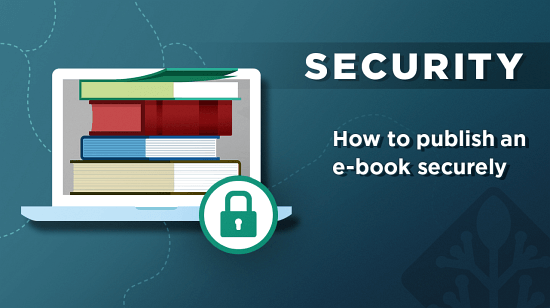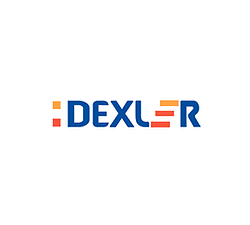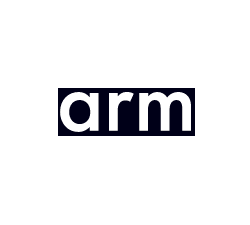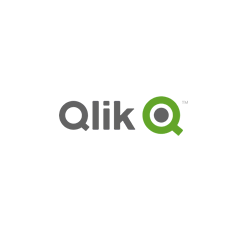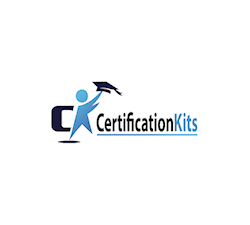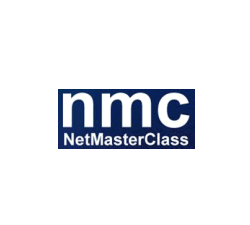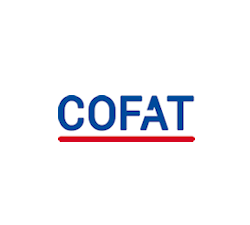How to protect ebooks from sharing, copying & piracy with DRM
How to protect ebooks from sharing & copying with Safeguard PDF security
To protect a PDF ebook from being copied
In Safeguard Secure PDF Writer, choose the ebook protection options:
- Stop printing, allow printing, or limit the number of prints.
- Add dynamic watermarks that are permanent, to viewed and or printed pages. Dynamic variables replace actual user and system data when the document is viewed/printed so you only have to protect the document once for all users. By using watermarks you can discourage users from photocopying and distributing printed copies.
- Decide whether you want to make it expire on a specific date, after a number of views, after a number of prints, or after a number of days from opening. You might want to make an ebook expire if you want to provide a sample for a limited period of time.
- Block screen shots and prevent screen grabbing.
- Allow or deny offline use. In most circumstances you probably want to allow users to view ebooks without having to be connected to the Internet. You can however enforce a connection after a certain number of days and then never again so that if a chargeback is made you can instantly revoke access.
Safeguard’s default ebook protection
- Stops users sharing ebooks, editing, copying and pasting content
- Locks ebooks to machines or devices so they cannot be shared
- There are no passwords for users to enter, manage, or remove
- Revoke ebooks at any time regardless of their location

 | Ebook Protection and DRM security |

Use ebook DRM software to protect ebooks from sharing & theft
 What is e-book protection & ebook copy protection?
What is e-book protection & ebook copy protection?
Ebook protection or ebook copy protection is the application of security controls to an ebook to produce a result consistent with the needs of the ebook publisher. This could be who is entitled to use the ebook, whether they can transform it, copy it, obtain printed copies, etc.
Ebook security lets publishers protect e-books against unauthorized distribution and use (stop sharing & copying) and prevent revenue loss while still enabling authorized use.
 Items to consider when choosing e-book protection software
Items to consider when choosing e-book protection software
There are many issues to consider (see below) when protecting ebooks. digital rights management is an essential addition for ebook security.
- Copying & distribution. If someone purchases an ebook, they feel it should be theirs to keep and do what they like with. A physical copy is quite different from a digital one because an identical copy can be easily produced and quickly distributed. There is no need for the photocopier and the use of the postal system when you are dealing with digital e-books – a simple file copy and email distribution or upload to a website will do. E-book publishers want to protect their IPR and prevent loss of revenue by stopping ebook sharing (unauthorized distribution) and copying, however attractive they are to the purchaser.
- Licensing authorized devices. You need to address how many devices an e-book should be allowed to be installed on. An e-book publisher might argue that one is enough – just the same as if a person had purchased a single copy of a physical book. A user would argue they need to use it on several devices. Good e-book protection systems use digital rights management to allow you to specify the number of devices the e-book can be used on.
- Offline use. When a person purchases an e-book, they don’t want to have to be connected to the Internet to view it (just like a physical book). It is important that the e-book protection system is capable of allowing permanent offline use. More sophisticated DRM based e-book protection systems should let e-book publishers specify a one-time connection after x days of use so they have the ability to revoke access if a chargeback is made. Also, they should have the option to connect to the internet for licensing if it is available.
- Printing. Just because someone has purchased an e-book, that does not mean they have the right to produce a hard copy of it as well. If printing is to be allowed, then you might want to consider the use of dynamic watermarks (user information is added at the time of printing). This is to provide another layer of e-book protection – most people don’t want to have their names associated with copies that have been unlawfully distributed.
- Portability & Security. The ebook format you decide upon is equally important – what file format do you have to convert to, and do you get the same results on different devices? While both Amazon (Kindle, .azw) and Adobe (epub) have their own popular proprietary e-book formats they have both been broken – type in Kindle .azw crack or epub crack into Google and you will find quite a few websites dedicated to this task. So, as an ebook publisher, you might want to wonder what e-book protection you are actually getting. Locklizard works with PDF files since they provide consistent rendering across a variety of platforms and devices. Our bespoke viewer applications mean we don’t have to rely on the Adobe security handler (security through obscurity) for the protection of e-books.
- Fixed locations. This is a more sophisticated DRM control that only allows the e-book to be used from a specific location (IP address or range) which might be a library, a school, or a country, and so on. This allows a publisher to manage access to e-books much more flexibly.
- Dynamic watermarks. There are many ebook digital rights management systems that claim to watermark ebooks dynamically with user information. However, often these are just standard PDF watermarks that can be easily removed using any PDF editor. If you want to add watermarks to a PDF ebook, then you need to make sure they cannot be easily removed.
- Managing expectations. A digital ebook does not cost the same to produce or distribute (in both time and physical shipping costs) as a physical copy (paper or hardback). E-book publishers can charge less and manage customer expectations of use (what limitations there are on copying, printing, use on additional devices, etc.) to justify lower prices than physical copies.
DRM provides an essential series of licensing measures in ebook protection which extend the ability of the publisher to publish safely when distributing ebooks in the digital marketplace.
 Other ways to protect ebooks
Other ways to protect ebooks
 Ebook DRM
Ebook DRM
If you’ve sold, bought, or borrowed an ebook previously, there’s a good chance you’ve already run into other ebook digital rights management solutions (ebook DRM). The most popular offerings are from Adobe and Amazon, with offerings from Nook, Kobo, Google Play etc. building off of one or the other.
The important thing to understand is that these DRM solutions were never well implemented and are easy to remove. Due to flaws in implementation and obfuscation, users can remove the copy protection from ebooks by pressing a single button in a free cracking program. They can then share the ebook with anybody who wants it. The worst part is that because these tools market themselves as “conversion” tools, they’re freely available with no legal repercussions.
 Social DRM (Watermarking)
Social DRM (Watermarking)
Social DRM refers to the practice of embedding visible or invisible watermarks in an ebook that typically contains identifying information. The idea is that users will not share the file with others knowing that it can be traced back to them. Or, failing that, the copyright holder will be able to track down the source of the leak and pursue legal action.
The problem is that social DRM does not prevent the customer from editing the document. As a result, a pirate just needs to purchase a legitimate copy, find the watermarks in the documents code, and remove them. Once they share it, whether they catch every watermark or not, the ebook is already out there and next to impossible to take down.
 Ebook password protection
Ebook password protection
Another route some self-published authors take is password protection. This can be achieved by either hosting the ebook on a website and requiring the password for access or encrypting a file and only allowing decryption with the right password.
The problem with either method is that passwords only protect a document when it is in transit (being sent via email etc.) or at rest (sitting on the users’ computer). They don’t protect against unauthorized ebook sharing because the customer can just share the password with whomever they like.
 Copyright Registration
Copyright Registration
Does copyright registration/ copyright law protect your ebook from copying?
Authors and other content creators are often encouraged to register their copyright as soon as they consider publishing their work. Though you are entitled to a degree of inherent copyright protection the moment you create your work, official copyright registration will give you more options should you need to pursue legal action against ebook piracy.
However, copyright registration alone does nothing to protect an ebook from copying. Pirates are usually very aware that what they are doing is illegal. Knowing a work is copyright registered does not act as much of a deterrent, nor does it impose any physical restrictions. Unfortunately, copyright registration is also of limited use when it comes to getting pirated content removed. Most pirate sites refuse to comply with a takedown notice and go to great lengths to protect the identity of their owners, uploaders, and server locations.
Really then, enforcing your copyright through the legal system should be your last resort. However, this is both time-consuming and expensive. It’s much better if you can stop your ebook from being distributed without your permission in the first place.
 FAQs
FAQs
Are all ebooks DRM protected?
No. ebooks are not DRM protected by default, but many publishers decide to add DRM to help prevent illegal downloads. DRM is particularly common on platforms such as Amazon Kindle and Kobo, who make it as simple as ticking a box before listing.
What is the best way to add DRM to an ebook?
The best way to add digital rights management to an ebook is to convert it to a PDF and protect it with a PDF DRM solution. Unlike popular ebook protection methods, Safeguard PDF DRM cannot be easily bypassed or removed.
Should I have DRM on my ebook?
If you’re planning to make money, it’s a good idea to protect your ebook with DRM. Without it, you risk losing a large chunk of your revenue to ebook piracy.
However, it’s critically important that whatever digital rights management solution you use actually works. Sadly this just isn’t the case for .epub, .azw, or .mobi DRMs. Instead, you should convert your ebook to PDF and protect it with a tool like Safeguard DRM ebook security.
Where can I sell protected PDF ebooks?
Anywhere that will let you list them for sale. While Amazon likely won’t let you list protected PDF files, other retailers will. You can also sell them on your own website and make use of the e-commerce add-on for automation.
Where can customers read a Safeguard-protected ebook?
On a Windows, Mac OS, iOS, or Android device – so long as they’re authorized to do so.








 Free Trial & Demo
Free Trial & Demo What is e-book protection & ebook copy protection?
What is e-book protection & ebook copy protection?
 Items to consider when choosing e-book protection software
Items to consider when choosing e-book protection software Other ways to protect ebooks
Other ways to protect ebooks
 Ebook DRM
Ebook DRM Social DRM (Watermarking)
Social DRM (Watermarking) Ebook password protection
Ebook password protection Copyright Registration
Copyright Registration FAQs
FAQs Download e-book protection software – protect ebooks from sharing
Download e-book protection software – protect ebooks from sharing